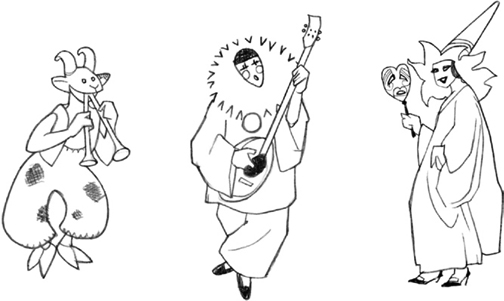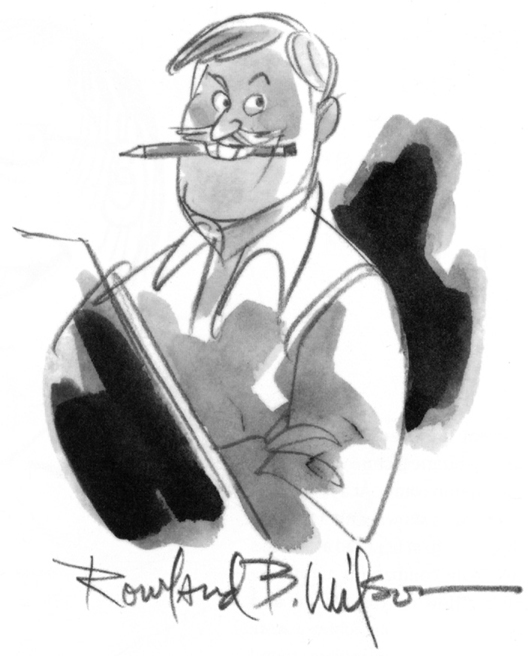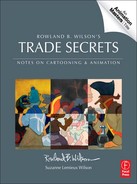Foreword
Tradition and Originality
Tradition is the way that has been discovered to do it right.
It’s not that it is so hard to find out the way to do it right, which is always the simple way. It is just that the ways to do it wrong are so many.
They are all the other ways than the traditional way.
The problem is to find a way to express your ideas within the tradition.
This can be done in a collection of single modifications of the tradition. These modifications usually relate to the individuality of other artists who work in the tradition.
In other words you can do whatever you like in the areas where the traditional artists differ, but you should hew to the areas that traditional artists have in common.
When you discover what all these other artists have in common, that is the tradition and you should follow it. Everything else is open for interpretation.
The sum total of all these interpretations (and they are many) is your originality and individuality. And it will be built on something solid.
You can’t improve on art—you can only make more.
You can’t do better than Rembrandt by putting more highlights in the eyes or making the background murkier. You can only try and learn his principles and apply them again to something else.
You can’t make a better classic—only another one.
Art is the extremely hard work of making it look easy.
There is none harder.
The Remedy Paradox
If a thing seems insufficient then subtract some of it. If a thing seems too much then add to it.
Don’t let your head get in front of your eyes!
Following the rules of draftsmanship, design, perspective and light doesn’t make you look smart. It only stops you looking stupid.
Art is the extra you do after you’ve gotten all the questions right.
It’s what you do after you know it all that counts.
Apply the principles of Drawing to Life.
Excellence and Perfection
What’s wanted is excellence, not perfection. Perfection exists alone. It needs nothing.
Excellence satisfies a relationship in a good way. One of many good ways. There is no better or best in excellence. There is only good. Non-excellence is non-good. It is not partly good, partly mediocre, partly awful—it is simply not excellent. That means it doesn’t satisfy its responsibility to complete the whole. Period.
A nut is excellent if it secures a bolt. It’s an either–or proposition, related to a specific case.
A play or work of art is a much more complicated object than a nut but it too has a specific function. It satisfies its requirements to the artist and the audience.
And there are unlimited numbers of ways it can do this.
Perfection suggests there is only one way this can be done. This can only be true if there were only one artist and one audience. Perfection is a monologue, not a dialogue.
Sometimes a thing is so hard to do that in order to get it right, you put so much effort in it that it turns out perfect.
What can you do? You can’t throw it away just because it’s perfect.
You have to be flexible about these things.
Grains of sand in the hourglass of time. The day of liberation comes. The sun comes up like any other day.
The grains of achievement pile up until the thing is done.
The grains of degeneration pile up until the thing is gone.
Put something positive in every day. Take something negative out every day.
Life is a compromise.
Since there isn’t enough time to do it all first best, do it second best. And just select what you will do first best.
The Spirit of Sacrifice
You can sacrifice without being great, but you can’t be great without sacrifice.
Sacrifice means taking twice as long to do a job better, thereby sacrificing either leisure time or earning time.
An artist’s potential is circumscribed by his willingness to sacrifice—regardless of his ability.

Knowledge, Wisdom and Information
Knowledge is knowing that success requires knowing.
Wisdom is knowing that success requires knowing what others know not.
Information is the What.
You may succeed without knowledge or wisdom but you can’t succeed without information.
Information is a commodity like gold and should be treated as such.
“Talent” suggests a facility to manipulate materials.
“Vision” is a way of questing for a specific look that is seen in a thing—that you wish to bring out more sharply and definitely.
Vision can be emotional, warm, happy, frightening, humorous, serene, contrasting or conflicting, et cetera.
Or vision can be intellectual—the expression of structure, function, operation.
Beauty is the successful, shapely, economic expression of the vision.
Talent is a means—a tool.
Vision is the guiding idea.
Art is the realization of the two.

Rowland B. Wilson
